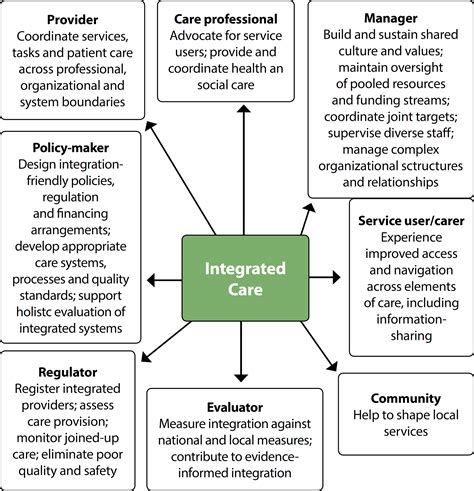Intro
Discover Kaiser Permanentes integrated health care system, offering preventive care, medical research, and innovative treatment options, prioritizing patient-centered care, health insurance, and wellness programs.
The Kaiser Permanente health care system is one of the largest and most successful health maintenance organizations (HMOs) in the United States. With a history dating back to the 1940s, Kaiser Permanente has been at the forefront of innovative and integrated health care, providing high-quality medical services to millions of members across the country. The organization's commitment to preventive care, cutting-edge technology, and patient-centered approach has made it a model for the health care industry. As the health care landscape continues to evolve, Kaiser Permanente remains a leader in delivering comprehensive and affordable health care to its members.
The importance of a well-organized and efficient health care system cannot be overstated. With the rising costs of medical care and the increasing complexity of health issues, it is essential to have a system that prioritizes preventive care, coordinates medical services, and empowers patients to take an active role in their health. Kaiser Permanente's integrated approach to health care has been shown to improve health outcomes, reduce costs, and enhance patient satisfaction. By leveraging its extensive resources and expertise, Kaiser Permanente is able to provide its members with a wide range of medical services, from routine check-ups and screenings to complex surgeries and specialized treatments.
The success of Kaiser Permanente can be attributed to its unique business model, which combines health insurance, medical care, and health education under one umbrella. This integrated approach allows Kaiser Permanente to coordinate care, manage costs, and focus on preventive measures, ultimately leading to better health outcomes and higher patient satisfaction. With its strong commitment to quality, innovation, and patient-centered care, Kaiser Permanente has become a benchmark for the health care industry, and its model has been studied and emulated by health care organizations around the world.
Kaiser Permanente History and Evolution

Key Milestones in Kaiser Permanente's History
Some of the key milestones in Kaiser Permanente's history include: * The establishment of the Kaiser Foundation Health Plan in 1952, which marked the beginning of Kaiser Permanente's expansion into a full-fledged health care organization. * The introduction of the Kaiser Permanente Medical Group in 1955, which brought together a team of physicians and medical professionals to provide high-quality care to Kaiser Permanente members. * The development of the Kaiser Permanente Health Plan in the 1960s, which introduced a new approach to health care that emphasized preventive care, coordinated medical services, and patient education. * The expansion of Kaiser Permanente into new regions and markets, including the establishment of Kaiser Permanente facilities in Oregon, Washington, Colorado, and other states.Kaiser Permanente's Integrated Care Model

Benefits of Kaiser Permanente's Integrated Care Model
The benefits of Kaiser Permanente's integrated care model include: * Improved health outcomes: By coordinating care and focusing on preventive measures, Kaiser Permanente's integrated care model has been shown to improve health outcomes and reduce the risk of chronic diseases. * Reduced costs: Kaiser Permanente's integrated care model has been shown to reduce health care costs by minimizing unnecessary tests and procedures, reducing hospital readmissions, and promoting preventive care. * Enhanced patient satisfaction: Kaiser Permanente's integrated care model has been shown to enhance patient satisfaction by providing members with a seamless and coordinated care experience.Kaiser Permanente's Commitment to Quality and Innovation

Examples of Kaiser Permanente's Innovative Initiatives
Some examples of Kaiser Permanente's innovative initiatives include: * The development of a personalized medicine program, which uses genetic testing and advanced analytics to tailor treatments to individual patients. * The introduction of a virtual care platform, which allows members to access medical care remotely and receive personalized health coaching and support. * The launch of a mobile health app, which provides members with access to their medical records, test results, and health information, as well as tools and resources to manage their health and well-being.Kaiser Permanente's Impact on the Health Care Industry

Key Ways in Which Kaiser Permanente is Influencing the Health Care Industry
Some of the key ways in which Kaiser Permanente is influencing the health care industry include: * Promoting preventive care: Kaiser Permanente's emphasis on preventive care has helped to raise awareness of the importance of early detection and treatment, and has encouraged other health care providers to prioritize preventive services. * Encouraging coordinated care: Kaiser Permanente's coordinated care model has shown that it is possible to deliver high-quality, cost-effective care by bringing together different medical specialties and services under one umbrella. * Driving innovation: Kaiser Permanente's commitment to innovation has helped to drive the development of new technologies, services, and initiatives, and has encouraged other health care providers to think creatively about how to improve the care experience and enhance health outcomes.Kaiser Permanente's Future Directions

Key Challenges and Opportunities Facing Kaiser Permanente
Some of the key challenges and opportunities facing Kaiser Permanente include: * Managing the transition to value-based care: Kaiser Permanente is working to manage the transition to value-based care, which rewards health care providers for delivering high-quality, cost-effective care. * Addressing the opioid crisis: Kaiser Permanente is working to address the opioid crisis, and is implementing new initiatives and strategies to reduce opioid prescribing, improve pain management, and support members struggling with addiction. * Promoting diversity and inclusion: Kaiser Permanente is committed to promoting diversity and inclusion, and is working to create a more diverse and inclusive workforce, as well as to address health disparities and improve health outcomes for underserved populations.What is Kaiser Permanente's approach to health care?
+Kaiser Permanente's approach to health care emphasizes preventive care, coordinated medical services, and patient-centered care. The organization's integrated care model brings together health insurance, medical care, and health education under one umbrella, allowing for a seamless and coordinated care experience.
How does Kaiser Permanente promote quality and innovation?
+Kaiser Permanente promotes quality and innovation through a range of initiatives, including evidence-based medicine, quality metrics, and innovation. The organization is committed to delivering high-quality care to its members, and is constantly seeking new ways to improve the care experience and enhance health outcomes.
What are Kaiser Permanente's future directions?
+Kaiser Permanente's future directions include expanding its reach and scope, investing in technology, and focusing on population health. The organization is committed to delivering comprehensive and affordable health care to its members, and is exploring new markets, partnerships, and initiatives to achieve this goal.
We hope this article has provided you with a comprehensive overview of the Kaiser Permanente health care system. As a leader in delivering high-quality, affordable health care, Kaiser Permanente is an organization that is worth learning more about. Whether you are a health care professional, a policy maker, or simply someone who is interested in learning more about the health care system, we encourage you to share this article with others, and to continue the conversation about how to improve the health care system for all. By working together, we can create a healthier, more sustainable future for everyone.
